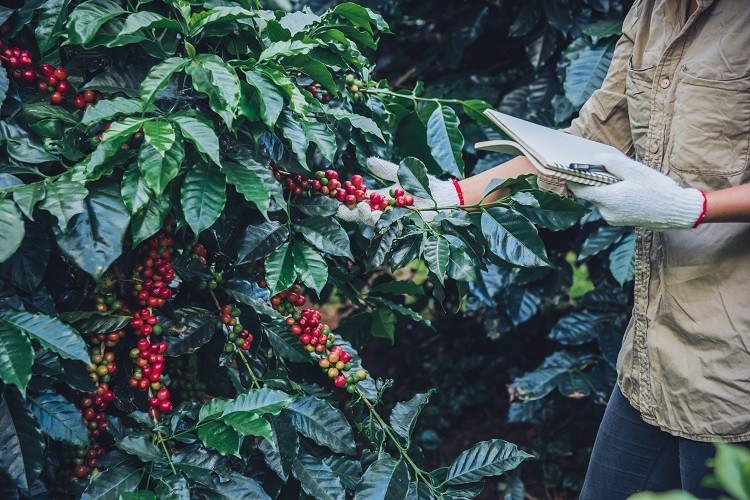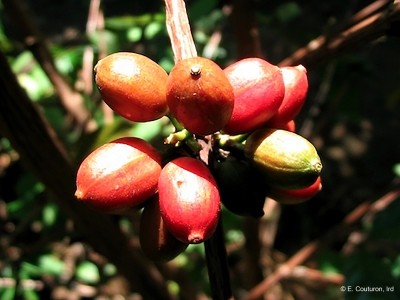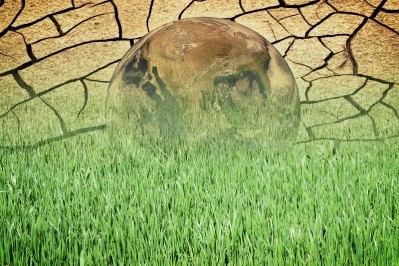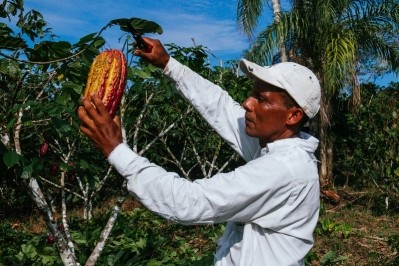Not so robust robusta: Coffee species ‘markedly’ more sensitive to warming than previously thought

Coffee is a multi-billion-dollar industry, with the vast majority of the world’s supply coming from just two species: robusta (Coffee canephora) and arabica (Coffea arabica).
The two are differentiated by growing altitudes. Where arabica evolved in high altitude areas with temperatures of between 18-23°C, robusta grows in lowland habitats with mean temperatures of between 22-30°C.
Unsurprisingly given its name, robusta – which supplies 40% of the world’s coffee – is considered the more ‘robust’ concerning heat tolerance. As a result, the species is thought to be more resistant to climate change.
However, the optimum production range of robusta has never been quantified. And if robusta is more sensitive to temperature than currently thought, researchers fear global coffee production could decline significantly under climate change.
What happens to robusta in sub-optimal temperature?
Currently, the estimated optimal mean annual temperature range for robusta production is between 22-30°C. This estimation is based on the climatic conditions of the species’ native range in the Congo basin, Central Africa.
A team of international researchers from Australia, Vietnam, and Colombia have used an extensive farm-yield dataset to quantify robusta coffee’s optimal temperature range in the field, and its sensitivity to temperature variation.
“Ours is the first study to empirically test the validity of the 22-30°C estimate using a spatially extensive (observations from across ~90,000 km2) farm-yield observation dataset collection over a wide range of climatic conditions throughout the core robusta-producing areas of South East Asia,” they noted.
Specifically, the researchers used 10 years of yield observations from 798 farms across the region, coupled with high-resolution precipitation and temperature data.
Findings revealed a significant difference between optical temperatures and current estimates.
According to the researchers, robusta has an optimal temperature below 20.5°C (or a mean minimum/maximum of ≤16.2/24.1°C), which is ‘markedly’ lower, by 1.5-1.9°C, than current estimates.
“In the middle of robusta's currently assumed optimal range (mean annual temperatures over 25.1°C), coffee yields are 50% lower compared to the optimal mean of ≤20.5°C found here,” noted the researchers.
“During the growing season, every 1°C increase in mean minimum/maximum temperatures above 16.2/24.1°C corresponded to yield declines of ~14% or 350–460 kg/ha (95% credible interval).”
Coffee production potential could significantly decline
In light of these findings, the researchers suggest that robusta is perhaps more similar to the temperature-sensitive arabica species than previously thought.
“It had been thought that robusta might be a good replacement for arabica (a type of coffee plant that prefers cooler growing conditions) in some areas as temperatures increase,” study co-author Jarrod Kath, from the University of Queensland’s Centre for Applied Climate Sciences, told FoodNavigator.
“However, this study suggests this might not always be the case as robusta production also seems highly sensitive to temperature.”
The researchers suggest the impact of these findings could jeopardize a multi-billion-dollar coffee industry, as well as the livelihoods of millions of farmers.
“In terms of impacts, I think the main one in the short term will be socio-economic impacts on farmers,” explained Kath. “I think coffee production will still be viable in lots of areas for quite a while yet, the problem will be that as the temperature warms some individual farmers may no longer be producing as much as they had historically and so might be exposed to some significant socio-economic hardship.
“Some research and thinking about how best to meet the socio-economic consequences of climate change on coffee farmers is probably something the coffee industry needs to think about carefully.”
Mitigating climate change
Kath also suggested the findings could cause a re-assessment of some of the coffee industry’s longer-term climate change adaptation strategies, which begs the question: given these findings, should the coffee industry be doing more to mitigate climate change?
According to co-author Laurent Bossolasco, sustainability management-focused ECOM’s Regional Manager, Asia Pacific, ‘it would look inappropriate to say no’ given the threat that rising temperatures pose to coffee farming – which is, by definition, ‘at the very base of this industry’ and the condition ‘sine qua non’ for it to sustain.
“On this common understanding, we have seen several initiatives and organizations promoting the diversification of coffee landscapes with associated crops and shade trees in order to increase the biomass and carbon sequestration - in successful cases, coffee farms were sequestering more CO2 than they were emitting through the production and transport of required fertilizers or the energy consumed for pumping irrigation water for example.
“Having said that, it is important not to point the finger at the farmer for all the problems in the world whose per capita emission isn't that significant,” said the sustainability expert, stressing he was sharing his personal views.
“All players in the industry downstream can find, pilot and implement alternative renewable energies in their day to day businesses when it allows.”
Climate change mitigation, will not be the number one priority for many farmers in the sector, Bossolasco continued.
“In the current context of decreasing coffee prices and farm revenues, increasing production costs when it comes to hiring labor and acquiring farming inputs (without mentioning the COVID crisis affecting the informal economy sector where most farmers' complementary revenues originate for off-farm jobs), climate change mitigation doesn't come first in the list of priorities that coffee growers have to address.
“For this reason, it is important for the industry to adapt its angle and put itself in smallholder farmers' shoes by eg. promoting the creation of new income sources associated with intercropped fruit trees (which production is sold in local markets) while improving the carbon sequestration through this additional biomass or eg. optimizing costs of production by reducing the amount of labour and energy required while transferring new technologies that are more resource-efficient for the conservation of irrigation water.”
Source: Global Change Biology
‘Not so robust: Robusta coffee production is highly sensitive to temperature’
Published: 28 March 2020
DOI: DOI: 10.1111/gcb.15097
Authors: Jarrod Kath, Vivekananda M. Byrareddy, Alessandro Craparo, Thong Nguyen-huy, Sahbaz Mushtaq, Loc Cao, Laurent Bossolasco

























